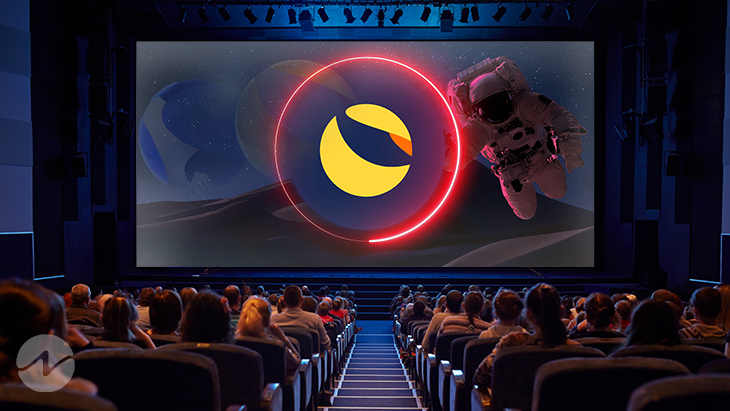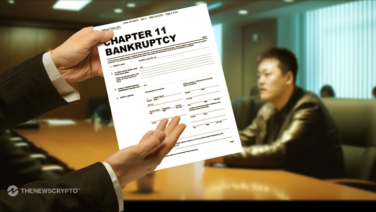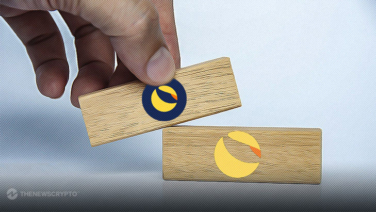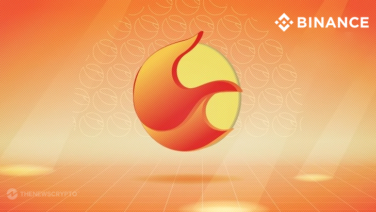The greatest downfall of the Terra ecosystem cast a ruinous effect on the crypto world. The crypto market was already crashing down due to soaring macro-inflation and the hyper-volatility of the fiat-based TradeFi. Terra (LUNA) and the network’s algo-stablecoin TerraUSD (UST) became the sufferers of a disastrous free-fall to their deathbeds.
LUNA Crash is the major disaster ever seen in the history of the crypto world. Terra USD (UST) has become the new entrant to the list of failed stablecoins such as Basis Cash, Iron, and Empty Set Dollar.
The tragic fall of the top performers is quite a stressful thriller. Before moving on to the new chapter of Terra, Terra 2.0, let us take a deep dive into the journey of Terra right from its beginning.
Started as a Blockchain Payment Firm
TerraForm Labs (TFL) emerged from Terra Alliance, a collaborative blockchain payment firm hailing from South Korea. Terra was founded by Do Kwon and Daniel Shin in January 2018. It was the milestone project of TFL.
Terra was created with a mission of cutting the ties of crypto assets with the real-world fiat to withstand the price-volatility. It wanted to aid the crypto space with the creation of “a stable digital currency”
TerraForm Labs built this proof-of-stake (PoS) blockchain using the Tendermint consensus of the Cosmos SDK. Cosmos SDK is an ‘open-source software development kit’ meant for creating custom blockchains.
The TFL team
“If Bitcoin’s contribution to cryptocurrency was immutability, and Ethereum expressivity, our value-add will be usability. We foresee Terra being used as a medium-of-exchange in online payments, allowing people to transact freely at a fraction of the fees charged by other payment methods.”
Terra turned out to be a prominent dApp platform hosting a family of “price-stable tokens” and it once stood as the second-largest blockchain after Ethereum to incorporate smart contracts.
Key Players of Terra Classic
Terra (LUNA) a.k.a Luna Classic (LUNC)
Terra (LUNA) is the central token for the Terra Classic blockchain, formerly known as Terra. Holders of LUNA gained the mining power in the native PoS network. It was used as staking assets to various DeFi protocols associated with Terra.
Most importantly, LUNA stood as the major token to defend the family of Terra’s stablecoins against the market’s price fluctuations.
TerraUSD (UST)
Terra initiated the “most-watched experiment” in the DeFi space by introducing its algorithmic stable coin, TerraUSD (UST). Like other stablecoins, the value of algorithmic stablecoins is pegged to a dollar at $1 USD. But what makes them unique is their peg being backed by a volatile crypto asset.
UST also maintained its value to the $1 peg and was backed by its sister token, LUNA. To mint 1 UST, users had to burn $1 worth of LUNA, and to redeem 1 LUNA, it was required to burn 1 UST. This on-chain swap mechanism caught the attention of investors.
Luna Foundation Guard (LFG)
Luna Foundation Guard is a non-profit organization under TerraDAO. This wing of Terra is responsible for maintaining the asset reserves for backing up the ecosystem’s native tokens. LFG’s reserve pools held BTC, AVAX, BNB, USDC, USDT along with UST and LUNA.
The Wild LUNA Crash
Terra Crash turned out to be the most horrendous crypto disaster. Investors never imagined these top crypto performers to nosedive into their death spirals. Terra(LUNA) ranked in the top 10 cryptocurrencies by market capitalization and TerraUSD (UST) remained as the third largest stablecoin.
UST De-pegging – Ultimate Cause
The beginning of May marked the mayhem of the Terra ecosystem. On May 9, the algo-stablecoin UST started to drift off from its peg. Investors were swayed by the market panic, they began dumping nearly $300 million worth UST out in the on-chain market. This ‘whale dump’ caused the ‘supply overhang’ and accelerated further losses to the Terra assets.
LUNA which attained its all-time high (ATH) of $119.18 USD in early April plunged 100% to bottom out below $0 USD. While other stablecoins such as Tether rebounded back to its $1 USD peg, UST remained depegged and witnessed steep declines. The close association of the supply of LUNA and UST toughened the recovery pace.
As the free-fall accelerated, the wealth of LUNA investors was wiped out in a very shorter period, intensifying the negative sentiment further. Notably, a well-known crypto billionaire Mike Novagratz, CEO of Galaxy Holdings, who recently announced himself as a LUNAtic became one among the investors who had lost millions of dollars in the LUNA crash.
Suspicious Evacuation of BTC From LFG Wallet
From late April, TFL actively acquired significant amounts of Bitcoin to their LFG reserves to back UST. This acquisition did not seem to cause any improvement in the ecosystem. According to official data from LFG, the reserves held nearly 80,399 BTC and a few other crypto assets before the crash.
The unnotified sales of the BTC reserves held up in the LFG, raised extreme controversies and suspicions amid the crypto community. During the crash, the BTC was sold to bring back UST to its peg. In the end, only 313 BTC stayed behind in the pool. But its $1.2 billion worth of BTC transactions was not transparent.
Later on May 16, LFG attempted to justify the reserve’s transactions history in a tweet thread.
Exchanges Began Delisting LUNA and UST
The extreme volatility of LUNA ignited the fear of investors, pushing them to pull back their assets. This led to enormous amounts of transactions and thereby causing network congestion. Eventually, the block production on Terra faced a 9-hour halt on May 11 and again on May 12.
Exchanges also faced this inconvenience and decided to suspend the trading of the Terra tokens. Binance suspended the trading for a shorter term and again resumed it on May 13. Initially, Huobi, FTX, L-Bank, Crypto.com, OKX, WazirX, CoinDCX suspended the trading.
Coinbase would suspend the trading of UST and WLUNA on its platform from May 27.
The total TVL in all the Terra-based DeFi protocols lost several billions. According to DefiLlama, Terra’s TVL stood at $29.65 billion USD and drastically dropped to $ $83.14 million USD, at the time of writing. The dominant Anchor protocol, Terra’s lending & borrowing protocol, and Astroport, an automated market maker (AMM) of Terra, dipped by 99% in TVL. Anchor protocol’s offer of 20% APY on UST deposits pulled in investors initially towards Terra.
Rough Recovery From the Death Spiral
TFL and the Terra investors have been through the worst-case scenario. Despite this havoc, Do Kwon and the team have not let their guard down. They worked closely with their LUNAtic community via Agora, their community forum, to propose revival plans.
The proposal of Initiating the burn of remaining UST in community pools passed but failed in its execution. Kwon proposed a ‘Kill Switch’ which will enable TFL to burn all its assets and detach from Terra within 24 hours. This proposal fueled several controversies around the founder. As this solution would not in any way help investors to overcome their debts.
All this mishap triggered the South Korean government to open an investigation into the Collapse of Terra. The authority summoned Do Kwon against his proposal on the hard fork and the Kill Switch. An anonymous investor vented out his anger in an attempt to barge into Kwon’s house. But sadly ended up being house arrested.
The latest proposal of LUNA2.0 genesis won 65% votes among the validators whereas 21% abstained from voting and 13% opted “no with veto”.
LUNA 2.0 – Rebirth of Terra Network
As UST’s de-pegging caused havoc in the ecosystem, Do Kwon proposed the plan to create an entirely independent blockchain, simply called “Terra”, without the algo-stablecoin UST.
The former blockchain is renamed Terra Classic and the pioneer tokens, Terra (LUNA) is renamed as Luna Classic (LUNC), and the de-pegged stablecoin TerraUSD as USTC. LUNA 2.0 a.k.a LUNA V2 will exist as the revamped form of Luna Classic whilst the latter will continue to exist as Terra Classic.
TFL’s CEO is still keen on building a community-based decentralized ecosystem.
14/ Our strength will always be in our community, and today is the most resounding sign yet of our resilience. We can’t wait to resume our work together building the future of money.
— Terra 🌍 Powered by LUNA 🌕 (@terra_money) May 25, 2022
Essential validators have begun working on the genesis of Terra 2.0 and the team has confirmed that the new Mainnet will go live sooner on May 28 around 6 AM UTC. The team confirmed that the dApps and other protocols of the Terra Classic will eventually migrate onto Terra 2.0.
1/ Yesterday, we said Terra 2.0 is coming. Tomorrow, it arrives.
— Terra 🌍 Powered by LUNA 🌕 (@terra_money) May 27, 2022
The community has been working around the clock to coordinate the new chain’s launch. Subject to potential change, we expect Terra to go live on May 28th, 2022 at around 06:00 AM UTC.
Anticipated Airdropping
Crypto airdrops are very crucial for any new crypto project unfolding in the DeFi space. Terra’s crash has driven out the trust that investors had in this once-successful project. Exchanges and investors are maintaining a safer distance and wish to approach the new project with caution.
The team has laid out a framework for the airdrops to LUNA Classic holders and stakers, residual UST holders, and the essential dApps developers of Terra Classic. Token distribution via airdrops is as follows:
- Community pool – 30%
- Pre-attack LUNA holders – 35%
- Pre-attack Anchor UST (aUST) holders – 10%
- Post-attack LUNA holders – 10%
- Post-attack UST holders – 15%
Terra 2.0 neither failed nor succeeded to achieve an optimistic market sentiment yet. The project failed to persuade major South Korean exchanges, except Upbit, to adopt LUNA 2.0. Upbit plans only to support the airdrop but abstained itself from enabling LUNA2.0 trading.
Exchanges began announcing their support for ‘LUNA 2.0 Airdrops’ on their official twitter handles. The announcements have flooded since May 25. Terra’s early supporter, Bitrue, a crypto exchange, became the first to support the airdrop and announce the listing of LUNA 2.0 or LUNA V2 on their platform.
Bitfinex, Gate.io, Bitget, Huobi, HitBTC, FTX, KuCoin, MEXC Global, BigOne, Okcoin and Kraken are the exchanges that have hailed their support for the LUNA2.0 so far. Centralized exchanges such as Binance and Bybit agreed to support the new chain by closely working with Terra and they also facilitate the airdropping on their platforms. Coinbase continues to stay silent so far and abstains from involvement with LUNA2.0 till now.
Despite all these announcements on airdrops, exchanges have not confirmed their stance on the trading of LUNA 2.0. Thus, crypto users’ question of ‘where to buy LUNA2.0’ isn’t supported with a solid answer.
Criticisms do prevail and some part of the community still opposes the rise of Terra2.0.
Dogecoin co-founder Billy Markus commented:
“LUNA 2.0 will show the world just how truly dumb crypto gamblers are.”
He criticized the new launch saying that investors are being misled again into crypto gambling with false hope.
Policymakers and off-chain regulators have their eyes on Terra and other crypto projects. They are also keenly looking for loopholes to regulate the unregulated decentralized space.
From Terra Crash the other crypto projects realized the significance of deploying less volatile tokens to back stablecoins. Moreover, this would keep the dream of Terra, ”decentralized economies deserve decentralized money”, alive.
The journey of Terra2.0 and LUNA2.0 begins with questions. What kind of impact will LUNA 2.0 have on the old LUNA? Will the new chain really help Terra to rise up from the ashes?
Recommended for you






